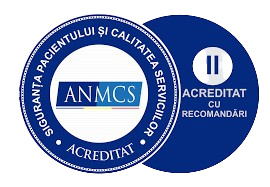Outline of contents of each session of "Cancer survival : principles, methods and applications" Course
- Introduction and logistics
- Objectives of course
- Introduction of faculty members
- Introduction of course participants
- Outline of course structure
- Presentation of course materials
- Session 1
- Survival research and cancer policy - 1
- An introduction to the wider public, public health and health policy applications of cancer survival
- Audit of cancer treatment and cancer survival in the population setting
- Survival by geographic area - e.g. Cancer Network, Health Authority, ...
- Impact on survival of implementing cancer treatment guidelines
- Session 2
- Population-based measures of cancer: incidence, prevalence, mortality and survival
- Principles, methods and applications of population-based cancer statistics
- Approaches to the assessment of progress in cancer control
- Data sources and their limitations
- Definition, classification and coding of cancers, and impact on population-based measures
- Relationship between measures of cancer burden
- Public health interpretation of trends
- Session 3
- Crude, net and relative survival
- Definition of - and theoretical relationship between - these three measures
- Advantages and disadvantages of crude, net (cause-specific) and relative survival
- What is the "ideal" measure of cancer survival ?
- The excess mortality rate and the theoretical basis of its estimation
- Applications of net and relative survival
- Introduction to STREL software and some practical issues ("interval" structure, negative excess mortality rate)
- Session 4
- Stage migration, screening and lead-time bias, multiple primaries: impact on survival
- Variation of survival with stage at diagnosis
- Categorisation of stage at diagnosis - clinical systems (TNM, site-specific: Dukes, FIGO, etc.) and cancer registry applications (WHO, SEER Extent of Disease, local ...)
- Quality of registry data on stage at diagnosis
- Stage-specific and stage-adjusted survival
- The "Will Rogers" phenomenon and stage migration
- Screening and lead-time bias: how can impact on survival be evaluated ?
- Is survival different for second or subsequent primaries ?
- Should second or subsequent primaries be excluded from population-based estimates ?
- Session 5
- Review 1
- An informal question-and-answer session on any topic covered on the first day
- All students and faculty will be invited to participate
- Session 6
- Life tables and measures of socio-economic status
- Role of life tables in relative survival analysis
- Life tables as a cross-sectional summary of recent mortality: risk of death in stated age range, expectation of life at birth, etc.
- Data required for constructing a life table
- Theoretical basis of life table construction : complete and abridged life tables
- Smoothing of abridged life tables and extension of truncated life tables
- Measures of socio-economic inequality: individual versus ecological
- Impact of geographic unit for assessment of socio-economic inequalities in survival
- Session 7
- Period survival analysis and "prediction" of survival
- Cohort, complete and period approaches to relative survival analysis
- Principles and theoretical basis of period analysis: analogy with expectation of life [Session 5]
- Application and interpretation of period survival estimates
- Recent developments in period analysis, including "hybrid" analysis
- Other approaches to prediction of survival: future projection of recent trends, and scenario modelling
- Session 8
- Practical 1 - Relative survival analysis
- Students will be divided into small groups for a practical analysis using real data, in one of the LSHTM computing rooms
- Teaching faculty members and all assistant teachers will be available
- Session 9
- Secondary measures of outcome: person-years of life lost, avoidable deaths, "cure"
- Estimation of secondary measures of outcome
- Data on recurrence and death
- Person-years of life lost: total and healthy person-years
- Avoidable deaths derived from excess mortality: trends, socio-economic inequalities and geographic differences
- Introduction to population "cure" [see also Session 16]
- Public health applications of secondary measures of outcome
- Session 10
- Review 2
- An informal question-and-answer session on any topic covered on the second day
- All students and faculty will be invited to participate
- Session 11
- Modelling relative survival with co-variates - 1
- Theoretical basis of estimating relative survival from individual tumour records (cf. grouped data) with co-variates, using generalised linear models
- Controlling for both background mortality (life tables) and the effect of co-variates (multi-variable modelling) in the estimation of relative survival
- Interactions between excess mortality rate ratios and time since diagnosis
- Session 12
- Modelling relative survival with co-variates - 2
- Further developments of modelling relative survival with individual co-variates
- Role of excess mortality rate
- Interactions between excess mortality rate ratios and time since diagnosis
- Flexible models for examining time-dependent excess risk
- Session 13
- Practical 2 - Modelling relative survival
- Students will be divided into small groups for a practical analysis using real data, in one of the LSHTM computing rooms
- Teaching faculty members and all assistant teachers will be available
- Session 14
- International comparisons of cancer survival
- Presentation and interpretation of recent results from EUROCARE, CONCORD and other studies
- "Low-resolution" and "high-resolution" studies in EUROCARE and CONCORD
- "Patterns of Care" studies: USA, Australia ...
- Extent of geographic differences in data quality, bias and national representativeness, and their impact on the interpretation of international differences in cancer survival
- Session 15
- Review 3
- An informal question-and-answer session on any topic covered on the third day
- All students and faculty will be invited to participate
- Session 16
- Estimating "cure" from cancer
- Working definition of "cure" in both clinical and population-based contexts
- Relevance of the asymptote in relative survival analyses
- Theoretical basis for the statistical estimation of "cure"
- Mixture models for evaluating "cure"
- Software for implementing mixture models
- Importance of the threshold for determining the asymptote
- Estimation of (and trends in) the proportion of patients "cured", and in the time from diagnosis to "cure"
- Public health applications of estimates of "cure"
- Alternative "non-mixture"models for estimating "cure" from relative survival data (Paul Lambert)
- Choice of parametric distribution in "cure" models
- The importance of modelling ancillary parameters in "cure" models
- "Up-to-date" estimates of "cure" derived from period analysis
- Session 17
- Statistical comparison of cancer survival estimates
- An overview of the theoretical basis for comparing estimates of survival, including log-rank tests, tests for interaction
- Age standardisation for comparing relative survival in cancer patient groups of different age structure
- Choice of standard weights
- Bayesian approaches to the comparison of many estimates [see also Session 21]
- Session 18
- Practical 3 - Estimating "cure" from cancer
- Students will be divided into small groups for a practical analysis using real data, in one of the LSHTM computing rooms
- Teaching faculty members and all assistant teachers will be available
- Session 19
- Selected presentations from course participants
- All participants will be invited to offer a short presentation centred on cancer survival, for discussion at this session. The presentation could be based on the results of analysis of the participant's own data, but could also be used to raise a theoretical or applied question about cancer survival - this could include issues in statistics, computing, data quality, public health or health policy.
- Session 20
- Impact of data quality on the estimation of cancer survival
- Importance of data quality in the interpretation and plausibility of cancer survival analyses
- Under-registration that is biased with respect to survival
- Simulation of under-registration that is biased with respect both to survival and to socio-economic status
- Evaluation of the impact of under-registration on survival estimates and on socio-economic gradients in survival
- The impact of death-certificate-only registrations
- The treatment of missing data in multi-variable modelling of relative survival
- The impact of active and passive follow-up, and of losses to follow-up
- Session 21
- Introduction to Bayesian methods for survival analysis and the study of geographical patterns of survival
- Basic principles of Bayesian inference
- Introduction to simulation-based methods for Bayesian calculations (Markov Chain Monte Carlo [MCMC] methods)
- Bayesian implementation of parametric and semi-parametric (Cox) models, including frailty terms
- Quantifying geographic patterns in cancer survival, using geographic units of various sizes (spatial auto-correlation and random effects models)
- Session 22
- Survival research and cancer policy - 2
- Further discussion of the wider public, public health and health policy applications of cancer survival
- Are cancer survival statistics of any use for public health and health policy ?
- Public health and policy impact of population-based cancer survival - ethnic, socio-economic and international comparisons
- Session 23
- Review 4 - software, life tables, references
- An informal question-and-answer session on any topic covered during the course
- In this last session, we will offer an opportunity for participants to raise questions about the availability and compatibility of software packages for the estimation of relative survival - SURV3, RELSURV, STREL, SEER*Stat, STRS, ... in STATA or SAS
- Implementation of these packages in public-use databases (e.g. SEER*Stat (USA), Cancer Information System (UK)) will also be covered
- Availability of life tables and other tools for survival analysis will also be covered
- We will also address residual questions about theoretical issues covered during the course

